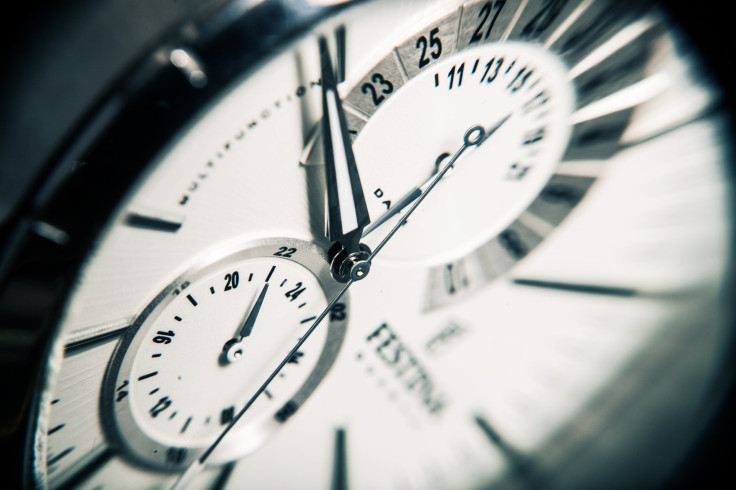Is It Time To Abolish The Leap Second? Tech Companies Nervously Await Tuesday’s Time Hack

The world will gain an extra second on Tuesday. By order of the world’s official timekeepers, the so-called leap second will be added to clocks around the globe to account for the Earth's slowing rotation. But the scientific technicality--which caused disruptions at LinkedIn, Reddit Inc. and Qantas Airways Ltd. in 2008 and 2012--is causing headaches for the world’s leading technology companies, which have spent months planning and preparing to avoid interruptions.
On Tuesday night, clocks that typically go directly from 23:59:59 to 00:00:00 must add in an extra moment, and instead move from 23:59:59 to 23:59:60 to 00:00:00. Most of us won’t notice the jump but multiple sites built on the Java platform and the Linux operating system reported glitches or were forced to reboot after recent leaps.
This time around, companies say they have learned from the hiccups and expect to take tomorrow’s extra second in stride. There are multiple approaches to the challenge. Google and Amazon will “smear” the effect of an extra second by slightly lengthening all the other seconds on the day of the switch to smooth out the jarring conversion. Microsoft will ignore the leap second but quickly sync its clocks to reflect the new time immediately after it happens. Systems including some U.S. financial markets which cannot simply add an extra second will briefly switch off and then turn back on instead.
Nigel Glennie, global director of corporate communications for Cisco Systems Inc. worked with a team of 60 people including product specialists and development engineers to review every single service request filed before or after leap seconds in both 2008 and 2012 to anticipate any problems that may arise with this year’s event. The company began issuing notices for customers in March and rolled out a suite of software updates to address potential issues, but is confident that the leap second will pass by without a hitch.
“We found a limited number of service requests that could be related to a leap second event,” he said. “Most of these customers reported a synchronization alarm that required a reset – easy to do with or without technical support.”
The leap second was introduced in 1972 as a way to keep Coordinated Universal Time (UTC), which is the standard definition of time shared around the world, in step with the Earth’s rotation. The Earth typically rotates once every 86,400.002 seconds but it does not spin at a perfectly steady pace – lately, it has slowed due to gravitational forces. Meanwhile, the clocks that maintain UTC keep time by measuring atomic vibrations which offer a close approximation of the Earth’s rotation but are not directly tied to it.
Official timekeepers therefore periodically recommend the addition of an extra second to keep clocks in sync with the Earth’s rotation. The groups which determine when to add a leap second include the International Earth Rotation and Reference Systems Service, the International Telecommunication Union and the International Bureau of Weights and Measures.
In this video, Vincent Meens, chairman of the International Telecommunications Union which is a specialized agency of the United Nations, explains the concept of the leap second:
Sanjay Acharya, chief public information officer of the International Telecommunication, says there is some controversy over whether a leap second should be observed at all -- particularly among those in the technology sector. Some argue that time should break away from the Earth’s rotation and operate on a continuous reference time scale that never requires such an adjustment. Advocates say this approach would reduce corporate costs and avoid the technological disruptions that occur every time the world’s clocks are re-set.
Acharya points out that time is a bit of a relative concept, anyway.
“The way I look at it is that most of us do not live in real solar time any more,” Acharya says. “We live in time zones that can actually have well over an hour’s difference, for instance the actual time difference between Bordeaux in France and Vienna in Austria, both within CET, is around 1.5 hours.”
In this video, Elisa Felicitas, director of the time department at the International Bureau of Weights and Measures explains why eliminating the leap second makes sense in a digital age:
Eventually, though, time would begin to shift in noticeable ways if the new definition were adopted. Sunsets would come earlier – by 2100, time would be two or three minutes ahead of the Earth’s rotation and by 2700, the lead would be about 30 minutes.
This fall, the matter of whether or not to eliminate the leap second will be debated at the World Radiocommunication Conference. In the meantime, an extra second will be added to clocks at midnight UTC on Tuesday, June 30 which is 8:00 p.m. EDT – and technology companies are holding their breath.
© Copyright IBTimes 2025. All rights reserved.






















